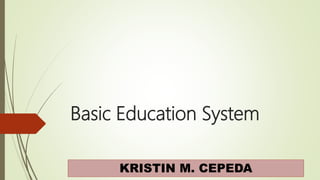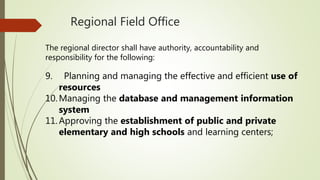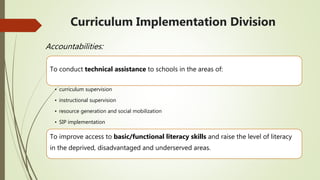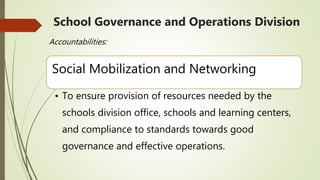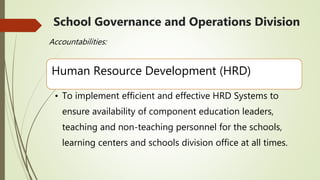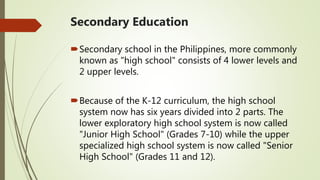The document outlines the organizational structure of the Philippine Department of Education from the central office down to the school level. It describes the key offices and their responsibilities at each level, including the central office under the Secretary of Education, the regional offices under Regional Directors, and schools divisions under Division Superintendents. Schools divisions may be further divided into school districts overseen by District Supervisors. The structures are designed to decentralize operations while maintaining accountability and relevance according to national education policies and learner needs.
